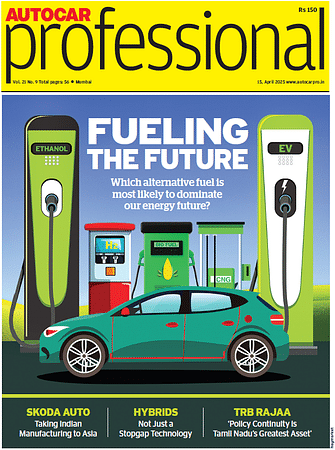PNGRB's Proposed New Pipiline Tariffs Could Cut CNG Price
The new proposal tweaks the distance slabs for pipeline tariffs and introduces special provisions for CNG and PNG users.
In a significant development for India's energy sector, the Petroleum and Natural Gas Regulatory Board (PNGRB), the country's oil and gas regulator, has unveiled a new proposed policy for determining tariffs on natural gas pipelines. Announced today, this initiative aims to reduce the cost of piped natural gas (PNG) for domestic households and compressed natural gas (CNG) for vehicles, with a particular focus on making natural gas more affordable for consumers in remote and far-flung areas. The proposal, currently open for public consultation, is poised to reshape the economics of gas distribution across the nation.
Current Tariff System
Under the existing framework, pipeline tariffs are calculated using a zonal system based on the distance from the gas injection point. The country is divided into three distinct zones:
Zone 1: Up to 300 kilometers, charged at 52.5% of the unified tariff.
Zone 2: From 300 to 1,200 kilometers, charged at 75% of the unified tariff.
Zone 3: Beyond 1,200 kilometers, with tariffs higher than Zone 2 (though exact percentages for Zone 3 are not specified in current documentation).
This structure means that consumers located farther from gas sources—typically in remote regions—face progressively higher transportation costs, a factor that has historically limited the adoption of natural gas in such areas.
Simplification and Consumer Relief
The PNGRB's new proposal introduces a streamlined tariff structure designed to benefit end-users, particularly those reliant on CNG and PNG for domestic use. Key elements of the policy include:
Revised Zonal Tariffs: The first tariff zone will now be charged at 66.17% of the unified tariff, while users beyond this zone will pay 100% of the unified tariff. While the exact boundary of "Zone 1" in the new system is not explicitly redefined in the proposal, it appears to simplify the previous three-zone system into a two-tier framework.
Special Provision for CNG and PNG-Domestic Users: In a groundbreaking shift, city gas distribution entities supplying CNG for transportation and PNG for household cooking will be charged the lower Zone-1 tariff—66.17% of the unified rate—regardless of their distance from the gas source. This eliminates the distance penalty for these consumers, ensuring uniform pricing nationwide.
This change is expected to significantly lower the cost of natural gas for domestic and transport users, making it a more competitive alternative to liquid fuels like petrol and diesel.
Driving Consumption and Investment
The PNGRB has articulated clear goals for this reform. "In yet another far-reaching reform for bringing investments and to increase gas consumption especially in CNG and domestic piped natural gas (one used in household kitchens for cooking) in the country, PNGRB has brought a proposal for reducing the price of piped natural gas used by domestic consumers and in transport," the regulator stated. Additionally, the PNGRB emphasized that "this is expected to make natural gas even more competitive to liquid fuels."
Beyond affordability, the policy includes measures to incentivize isolated network operators and pipelines, aiming to spur infrastructure development in underserved regions. This aligns with India's broader ambition to expand its natural gas network and reduce reliance on more polluting energy sources.
Gas Sector Reforms
The PNGRB has been steadily working to bolster India's natural gas ecosystem. Previous amendments in 2020 and 2022 targeted increased investment and consumption, particularly in remote areas. The regulator has authorized gas pipeline development across the country (excluding islands), supporting ambitious targets of achieving 120 million PNG domestic connections and 17,500 CNG stations by 2030. As of December 2024, India had 14 million PNG connections and 7,395 CNG stations, underscoring the significant growth potential ahead.
Positive Outlook
The proposal has garnered a favorable reaction from key industry players. An official from GAIL, one of India’s leading natural gas companies, remarked, "PNGRB proposals are positive for pipeline operators, reduction in volume assumption to 75% will be positive as well." He also noted that GAIL's separate proposal for a 35% tariff increase is under active consideration by the PNGRB, hinting at a balanced approach that could benefit both consumers and operators.
If implemented, this tariff policy could mark a pivotal step in India's journey toward a cleaner energy mix. By leveling the playing field for CNG and PNG-Domestic users nationwide, the proposal promises to enhance affordability and accessibility, particularly in regions previously disadvantaged by high transportation costs. This could accelerate the shift away from liquid fuels, drive economic growth, and support environmental goals by promoting a less carbon-intensive energy source.
Stakeholders across the energy sector will be watching closely to see how this policy shapes the future of natural gas in India.
RELATED ARTICLES
Rajratan Global Wire to Launch New Wire Rope Product Line at Pithampur Plant
The Board of Directors has approved a Rs. 50 crore investment to convert 12,000 TPA of Black Wire capacity into 10,000 T...
Cocoblu Retail Limited Earns 2025-26 Great Place To Work Certification
A wholly-owned subsidiary of RattanIndia Enterprises has been acknowledged for its workplace culture.
MAHLE Introduces Bionic Radial Blower for Automotive Air Conditioning
New technology improves efficiency while reducing noise, drawing inspiration from penguin fins.






 By Angitha Suresh
By Angitha Suresh
 31 Mar 2025
31 Mar 2025
 2722 Views
2722 Views







 Shruti Shiraguppi
Shruti Shiraguppi


